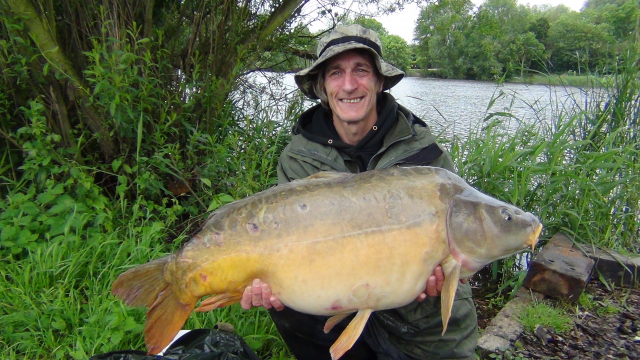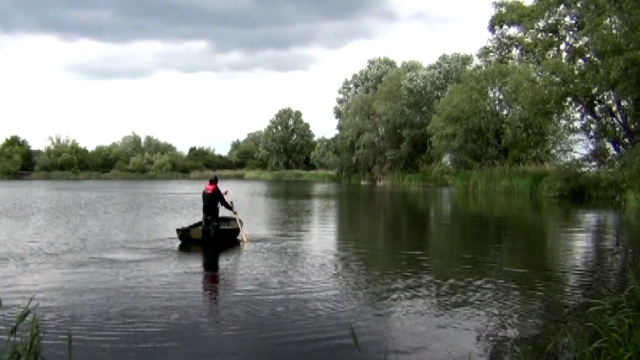
My next trip to Fenland Fisheries was on Willow Lake starting on June 10th for three nights and four days. Gary Spencer would be joining me and fishing the Carp Park swim evenings and mornings and nipping off during the day. The trip had been planned back in March when I had found out that Mike Hawes the owner was closing the lake for a two week rest period. Considering that this was the first break in three years constant 24/7 fishing we wasted no time and booked the entire lake for the first four days of opening!
On asking Mike gave me permission to use the boat for pre-baiting our swims the week before the opening, so I made full use of it. Plan A was to fish from swim 14 on the east bank to an area I had previously had a lot of success on. Gary was all for putting the bait all over the lake but I decided on an all or nothing approach where I would pile the bait into two spots and by sheer weight of feed pull the fish into my area. It had worked for me many times previously and had rarely failed, especially given the situation where they would not be getting bait from any other source except Gary's swim. Plan B as always was to move onto fish if the situation warranted it and having the entire lake to ourselves would mean I could always leave my kit in the swim and just move the rods.
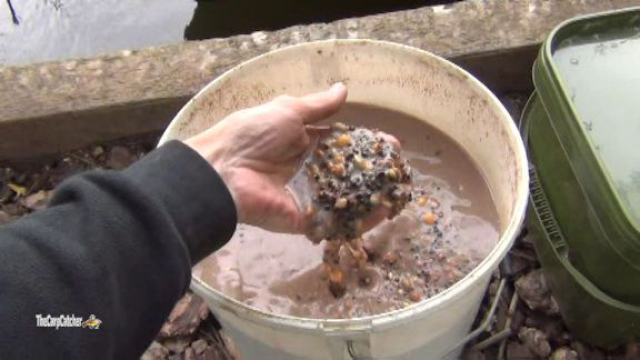
I had a load of boilies left over from the previous years field testing and so I decided to use these up and also use a large amount of particle mix to clean the area and keep the swim topped up between baiting's. We were due on the lake on the Sunday so I started my baiting up on the Monday before and continued for the next four days leaving the swim unbaited for the Friday and Saturday nights (looking back I should have baited lighter on Saturday night too). Each evening I put in three kilos of mixed boilies and ten kilos of my particle musilli mix from the boat. If that didn't do the trick I thought? then nothing would.
This year the weed growth and the lake bed of Willow Lake were unlike any previous year. The water was much more coloured and the huge beds of weed that used to cover the lake had completely disappeared. I knew that this would have a big bearing on catching the lakes inhabitants and so I spent quite a lot of time scraping the bottom and dragging around leads and rigs to find out how it felt and what I would bring back however I fully expected the area I had baited up to be clean when I started fishing.
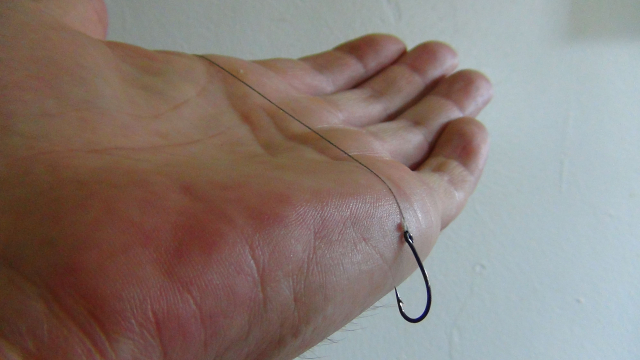
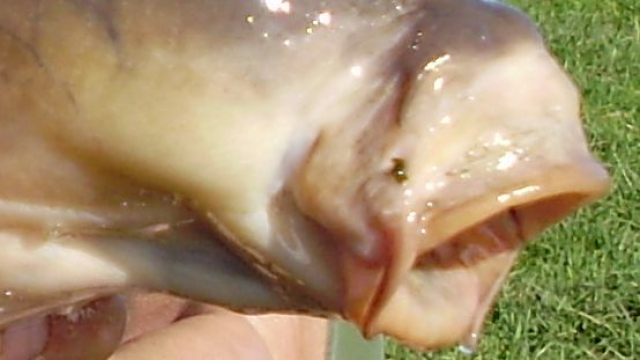
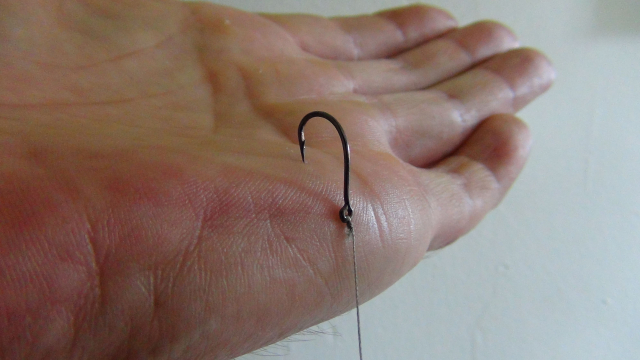
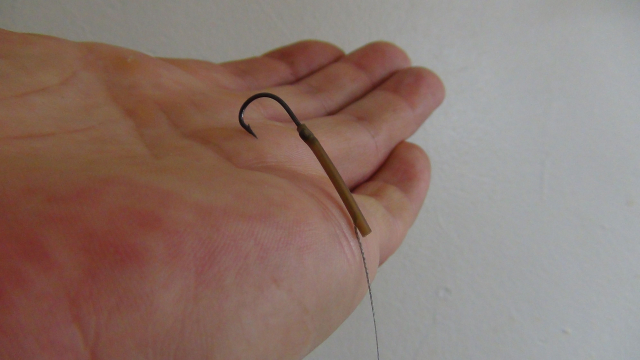
I don't often lose fish but when I do it'll be the hook hold that mostly goes so hooks etc. are all under scrutiny in these sessions as well as the rigs I use and the presentation I am trying to achieve. Just recently I watched a famous carp angler demonstrate how his rig turns the hook by laying the line over his hand with the rig hanging down and then pulling on the line. The hook rose up to the hand and when it got to the side of the palm it turned and took hold, this is the wrong way to do it. It should be demonstrated the other way around because the hook is already in the carp's mouth being spat or pulled out by the tightening of the line not outside being pulled in.
Carp have what we call a protractile mouth this allows the carp to fully extend its mouth helping it to find food in the silt and chod, however when the carp's mouth is closed though the profile is completely different. This is important to remember because when the carp tries to eject the rig the mouth becomes flat and fully protracted and when the mouth is closed it acts as a fulcrum for the hook shank providing the carp with leverage against the hook hold.
Something I do like to do is use a longer shank hook or extend the shank with shrink tube or a stiff link and it's not to crank the hook with a bend. To get the turn in required I find that is not needed and in fact can be detrimental to hooking! The laws of mechanics prove a longer shank hook will turn and take hold faster than a shorter one and give a good hook hold. There are though drawbacks to using a long shanked hook once the hook hold is made and this is from the point of view of leverage. Some of you will no doubt have studied simple machines in your science classes at school, the lever is one of them. These were discovered by Renaissance scientist's and these laws of science apply today. Simply put, the longer the shank the more leverage on the hook hold and this can pull hooks out. So the answer for me is a stiff hook link or an extension to the shank using shrink tube. You get the benefit of the longer shank with its faster turn-in and quicker hook-hold without the drawback of increased leverage because the hook shank extension bends negating the force of leverage.
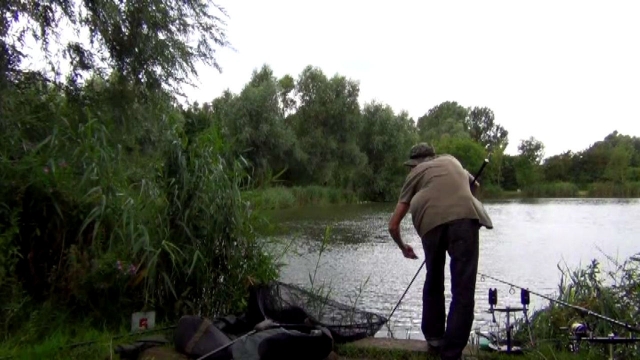
Often when I put a rig out I will drag it along the bottom into the chod, keeping the hook clear with a tiny bit of PVA popup foam. Doing this in the margins has proved to me that it hides a rig sweet but can also be a little tricky too. PVA Bags and sticks can overcome a lot of issues with presentation over silt and weed as the bag will sink and flatten out the contents and chod. Another thing I do since I use semi slack lines is to stick the rod right down into the margin after the cast and tug the line hard several times, pulling the line down into the lake bed and the chod. This also is very useful if you want to locate weed beds as you can feel the line pulling down onto them. It's something I have been doing for years now and like anything with repetition you get a feel for it
I am known for using light leads, most often one ounce but I also carry leads as small as ¼ ounce too. Many of the first carp I caught at the start of the 1980's were caught free lining and although I appreciate the effectiveness of the heavy lead bolt rig setup I suspect the carp are well aware of it now and definitely use the lead as leverage to throw hooks. Short range fishing will see me using heavier leads as well as lighter ones but anything over 20 meters with slack lines and I like a one ounce lead. Using light leads also needs a bit of thinking about, the perfect scenario is to have over 20 meters or more of line out, nice and slack and rock solid on the lakebed giving a nice drag effect, coupled with a light lead it'll often confuse the carp and hook them before they know it. Obviously I have to use a heavier lead sometimes for casting distances and also when I think the carp are not too sussed or the situation warrants it but generally I like a small lead. I use a running lead clip for all my pendulum setups so the lead dumps if needed and inline leads with my running rigs which I have also had a lot of success on.
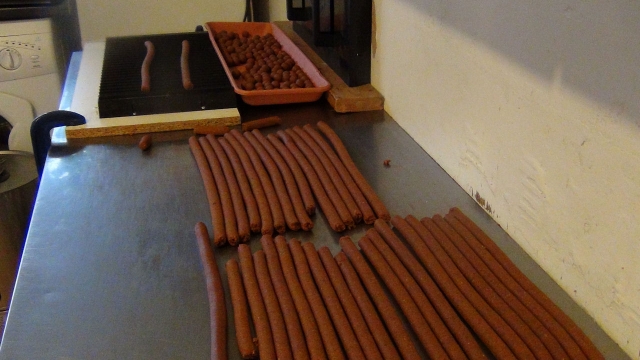
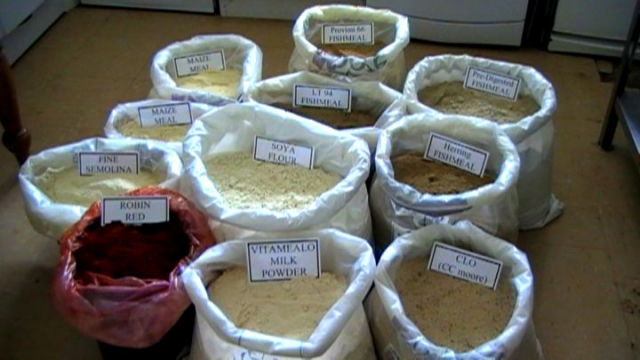
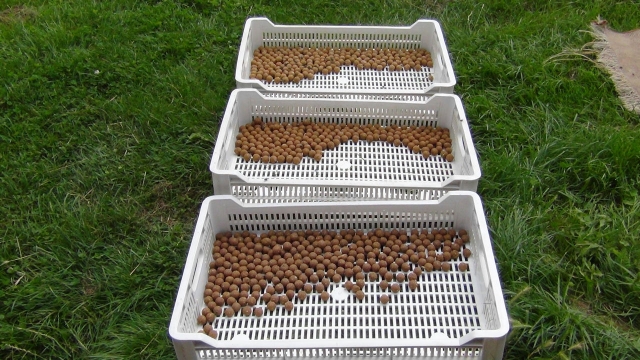
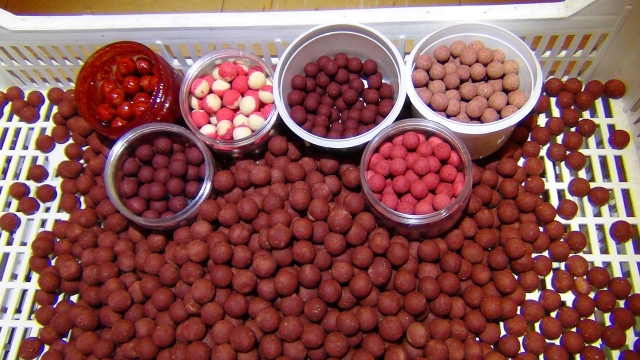
My bait is important to me in fact given the right weather and good location I reckon my bait will give me a big edge. A well know bait manufacturer and famous angler once said to me It would be hard to make a bait that you could not catch a carp on. This is true but, It's also easy to make a bait you cannot catch many carp on. Bait application of course makes a big difference to your catches no matter what bait you use, so if for instance you use The Cell then you can be sure that wherever you fish here in England at least, it's most likely to have been used on and applied to that water, this of course can also work against you.
So for me a good bait works instantly and does not wash out in a few hours, it has everything a carp likes and is not so cautious of that it either ignores it, or feeds on it very carefully. I am big on fishmeal's and for the last few years the price of it has been going sky high, so how much do you think is in your shop bought bait? It's simply not commercially viable to sell my bait in it's current form, unless of course you want to pay up to £20 per kilo? Remember it costs! My home made bait costs a lot because I use expensive ingredients and a lot of it too even when I am buying it in bulk. For a manufacture to keep the cost down to a tenna a kilo they need to make and sell that bait to a shop for a fiver at the most. Take out VAT, profit, packaging, advertising, testing etc. etc. and you can see they have a tough job providing you with anything like the quality you can put into your homemade bait. It's a fact of economics and so this is why I use my own bait. However that is not to say that shop bought baits are not good because many are, I just don't believe they are as good as the ones I make for myself, like mums homemade cakes eh.
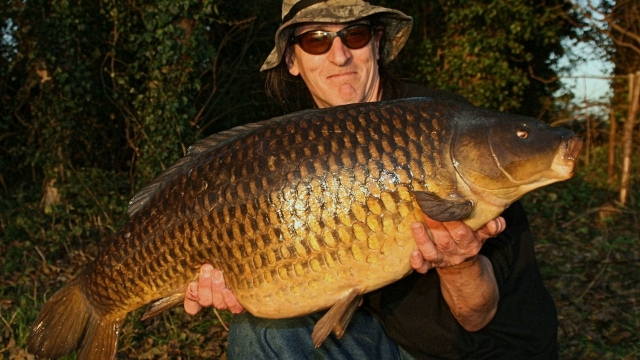
Sunday mid-morning on the 10 of June saw me rolling into the car park at Willow Lake full of anticipation. I had with me 4 kilos of my homemade Red Berry and a bucket of musilli plus four kilos of Very Berry I had made up just in case I ran out. Very Berry has the same blend of essential oils as the Red Berry but I replaced the fish oils with liquid molasses and dropped the fish meals in the base mix and replaced it with Vitamelo milk powder. This was originally designed for late season and winter use and back then I nicknamed it Winter Berry. First time out on it in November 2009 I had a 26lb common then a few weeks later a sweet 31lb common from Pingles Pool on a classic cool crisp Novembers morn. See Pingles Pool – A Dream Session https://thecarpcatcher.co.uk/thecarpcatchers_blog.php?post=41
I had decided to use a variety of rigs, all pretty much standard patterns using a combination of sink-link braid and coated braid plus choddys. Coupled with these I would use some home-made popups. Corkball popups with the hardened Red Berry base mix were also made up for the choddys. I have tested all of these at home extensively so I know how they react in water with various rigs and how long they stay up too. More importantly for willow, as we shall find out I should have also included some of my home made Casein based hard hookers.
By the time I had got the kit all setup, cast out and the kettle on the sun had come up and the fish had moved up to the surface. I was fishing with three rods but had the option (because we had the lake to ourselves) to use a forth. The left hand rod was placed up my margin to the left alongside some reeds in 8 feet of water. This had received a third of the pre-bait of mixed boilies and particle. The middle and right-hand rods were cast out to the prime spot 30 yards out and to my left. This is a spot I had caught a lot of fish off including in one evening three fish within 1.3lbs of all being thirty's. It was an area that came up sharp from the main lake in a short rise of 2 feet from 9 to seven and was more prominent than the surrounding area which slopped up a little more gradually. One rod was placed in seven feet the other in nine a few meters to the right.
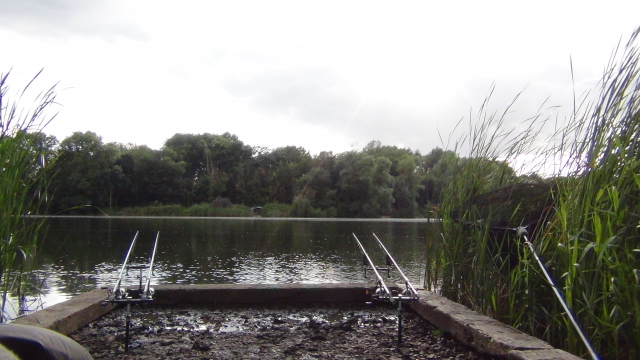
With all the three rods set on their spots I quickly got a forth rod out on a floater setup, inline bubble float, 1 meter long 12lb hooklength and a 10mm popup tied to a size 10 Fox SSC. This was cast out to the fish cruising out in the middle of the lake however the seagulls picked this off in seconds so I fired out some freebies and repositioned it. Ten minutes later my mate Martin Lawrence turned up for a chat whilst the carp had switched to the inside line coming within meters of the bank. Cat biscuits where sent out along with some popups but the seagulls, coots and ducks saw these off too.
By the time I was ready for some food the weather had cooled and the rain had started. I use my 50 inch brolly as a porch so up it went and I settled back for a good scoff. A while later Gary caught a small Grass carp of about 10-15lbs which literally flew out of the net (a number of times) and ended up with Gary being lead a right old dance.
I had elected not to put out any bait when I got there but to try singles first however after several hours without so much as a bleep I decided to put out some bait on both spots. Now I know that carp can eat a lot of bait as I have sat and watched it many times. A handful can go in minutes and on water like Willow Lake, in seconds! But I almost always stick to a few handfuls at a time rather than buckets. Buckets are good for pre-baiting over days and in a swim with no lines or rigs but when it comes to the actual fishing I always err on the cautions side as I have on occasions put a couple of kilos straight out and blanked. By the time the evening had come with no runs forthcoming my mind was switched on to putting more bait out and making something happen. As soon as I put the bait out the coots were on It on the inside line and the seagulls and tufty ducks were on it on the outside line.
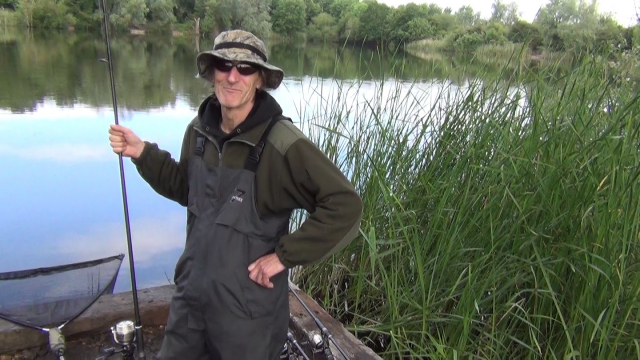
Of course all the time I had been there in the back of my mind was the worry that I might be fishing over 30 kilos of bait! But of course that was just a fear and an ill founded one too because of course if there had been any bait left from the weeks pre-baiting then the coots and tuftys would have still been on it when I got there and they weren't. Not long after a few good handfuls of my home made Red Berry went onto the prime spot a fish rolled over it, this boosted my confidence and confirmed my suspicion that they responded to the dinner bell. The fish were beginning to move around but the doubts in my head still lay there prodding me. The next morning I had itchy feet, it was 4am and I was already thinking about moving onto fish if the swim did not pick up. I was still mulling over the issue of bait but I was certain more was needed especially considering the amount I had put in over the last week, surely they were used to it and shouldn't I take advantage of that? But the weather told me otherwise it influenced me right to my gut. The temperature was dropping and more cold rain was expected with cooling winds so even though I knew I was going to start to put more bait out I decided on caution too.
I call this making something happen and this can take many forms but often putting in bait can make it happen. It did, in the shape of coot runs, tufty attacks and dive-bombing seagulls but I persevered, little and often is the key I thought, so a few good handfuls were put in again and the result was a grass carp! The wind and rain continued to pile in all day and I continued putting in the couple handfuls every few hours, my luck was certain to change and it did...
You can watch all these sessions on Willow lake here https://thecarpcatcher.co.uk/thecarpcatchers_blog.php?post=37

